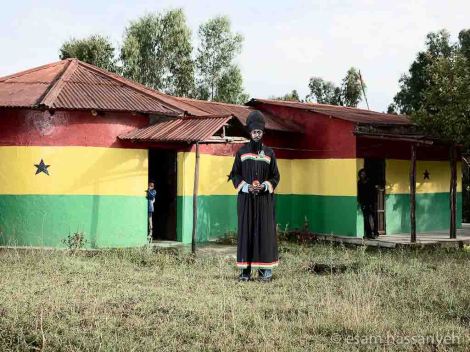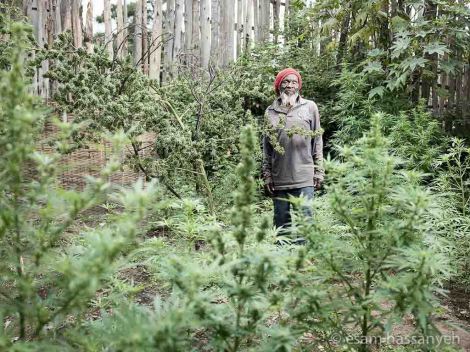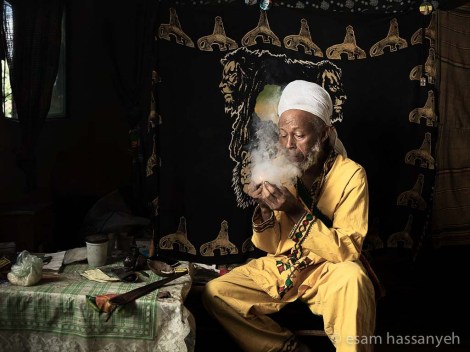Rastafarians of Zion is a collection of portraits of the Rastafarian community that have repatriated to The Promised Land (Shashamane, Ethiopia). This is the first of two blog posts. The other can be seen here Rastafarians of Zion-2
in April 2014, I spent eleven days in Shashamane with a view to starting this portrait project. Whilst meeting with a number of the Rastafarian community, I was only able to photograph just one Rastafarian (from Sweden). I quickly learn’t that the community is very sensitive to outsiders and people with camera’s. In September 2016, I returned and spent fifteen days in Shashamane. This time, I was able to gain more trust and a number of Rastafarians graciously allowed me and my camera an insight into their daily lives.
The history of Zion is complex and continues to be a sensitive topic even today. I am an artist, therefore, I have kept the focus on the people and not the politics. However, a brief background is important as it puts the Rastafarians’ portraits and stories into context as many sacrifices have been made to repatriate. The first of two posts introduces the background to The Promised Land. The second post, will cover more about the individual stories of the Rastafarians of Zion.

Before taking any portraits, I spent considerable time with each subject talking to them about their life in Zion and why they repatriated. Working alone, the portraits were captured using a Hasselbald H5D-50c, an 80mm and 50mm lens and one Profoto B1, with a 3ft Octa.


Brief Background of Zion (Shashamane)
In 1948, Emperor Haile Selassie I donated 500 acres of his own land (The Promised Land) to members of the Rastafari movement in order to allow them to repatriate to Africa. Following this, the first West Indian settlers started to arrive for permanent settlement in 1955.

in 1974, Emperor Haile Selassie I was overthrown. Since then, the Rastafarian community has endured a complicated and sensitive legacy regarding his land gift. There are an estimated 800 Rastafarians living in Ethiopia today, the majority in Shashamane and a few in Addis Ababa. Whilst Rastafarians strive to live harmoniously on the land and amongst the Ethiopian people, ethnic tensions between the countries two largest groups, the Oromo’s and the Amhara’s, have not helped. The land granted by The Emperor Haile Selassie I is located in a region populated by the Oromo people. His Imperial Majesty belonged to the Amhara.


To further complicate matters, foreigners are not permitted to own land in Ethiopia. Rastafarians are also not entitled to any special immigration status upon repatriation. Instead, they usually arrive on a tourist visa, then quietly overstay. In addition to immigration issues, there is also a daily visa fine of up to $10.


Some Rastafarians reside through correct immigration or official employment. A few marry Ethiopian woman, which entitles them to a passport. However, most Rastafarians are living in Ethiopia without status and limited rights. This means that nearly all Rastafarians who repatriate are unable to leave or travel freely outside of the country without a lengthy administrative process and large financial penalty (Which non can afford).


Thus, the reality of life in ‘The Promised Land’ is far from the dreams of repatriation created in books, speeches and reggae songs. Perhaps this is why that after visiting Zion (Shashamane), Bob Marley and many others have not repatriated themselves. Instead, they have subsequently promoted a more symbolic sense of repatriation to The Promised Land. This has frustrated many Rastafarians that have repatriated with their feet and not with words.


Understandably, the Rastafarian community of Zion is wary of outsiders. Especially of people with big camera’s and their motivations for taking photographs. It took considerable time to gain the trust needed to take these images. For that, I am truly thankful to the Rastafarian community…One Love.
All photographs were taken with a Hasselblad H5D-50c, an 80mm and 50mm lens and one Profoto B1, with a 3ft Octa.
The second post will focus more on the incredible personal stories of repatriation by the Rastafarians of Zion.
The entire collection of images and the stories behind them can be viewed on my web esamhassanyeh
